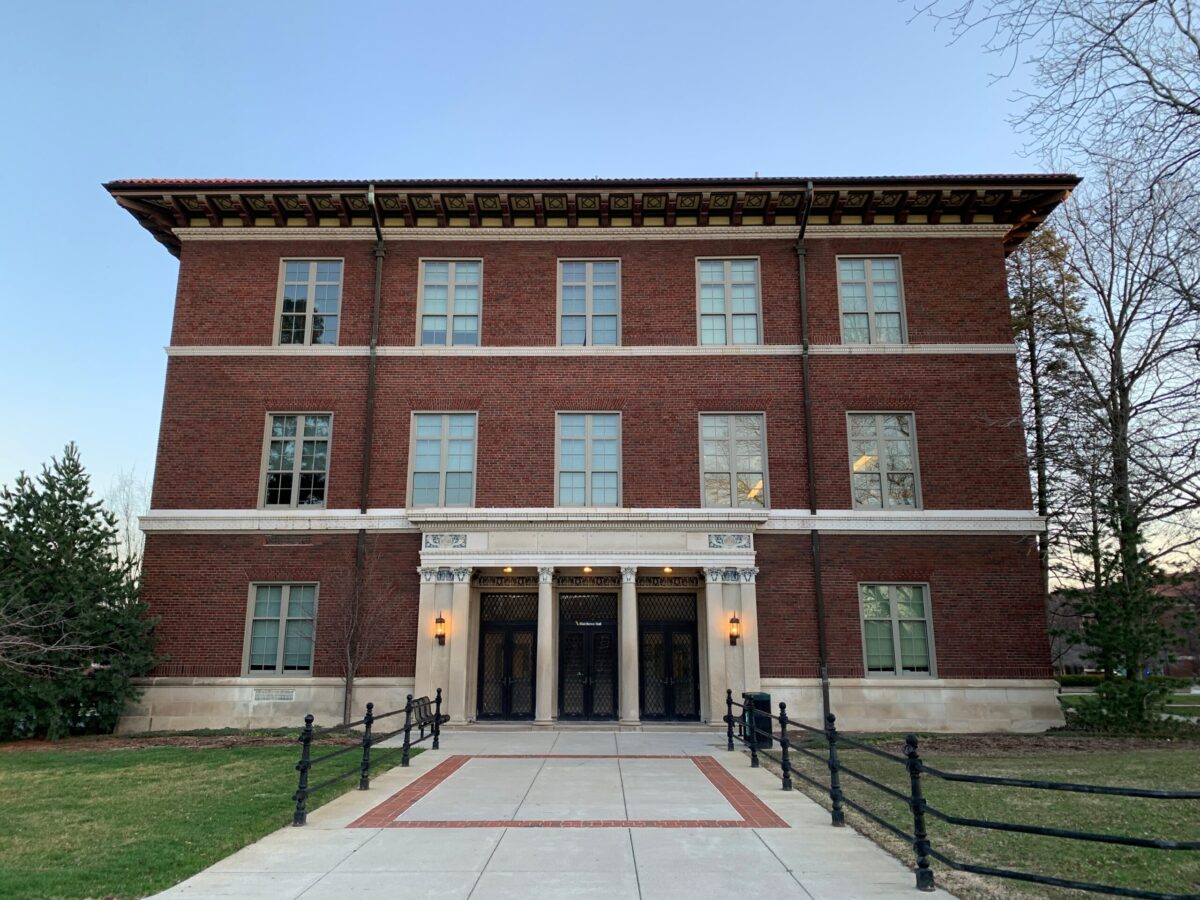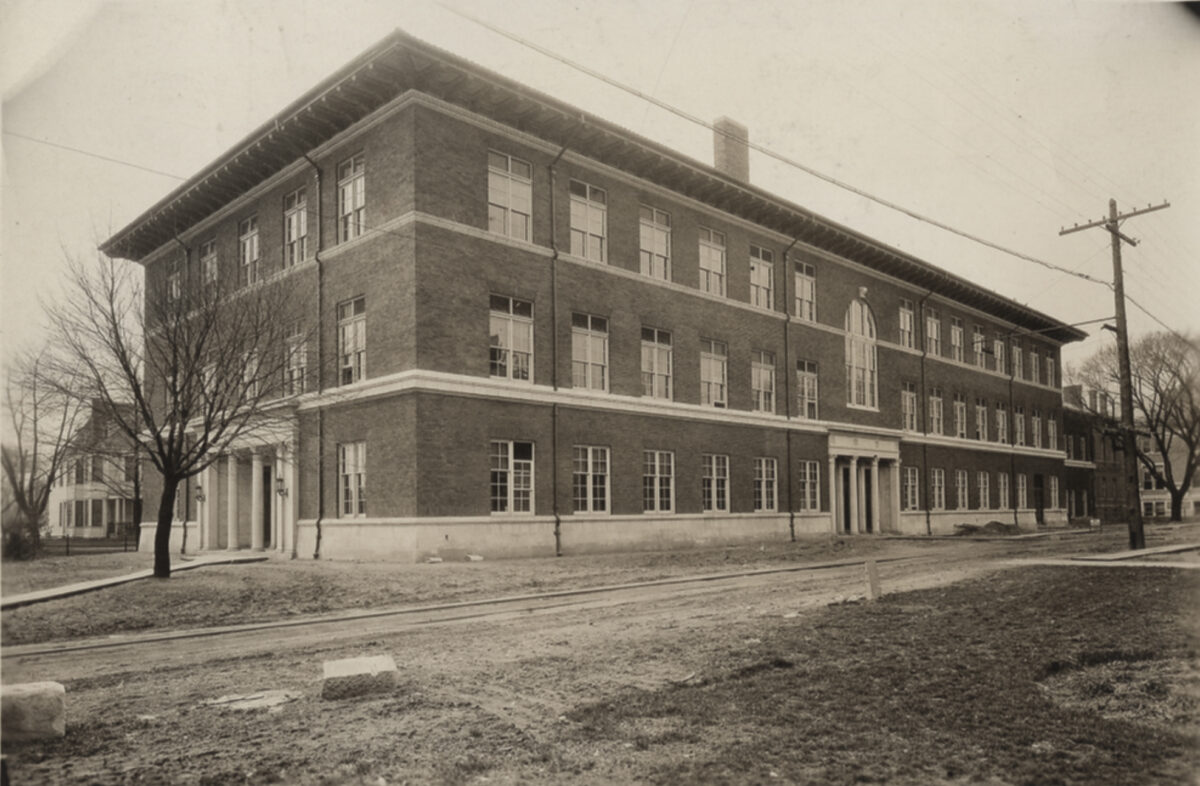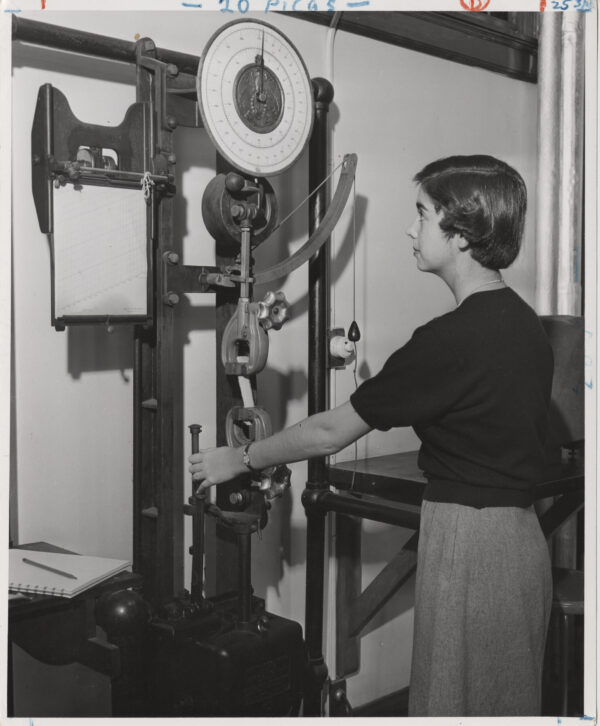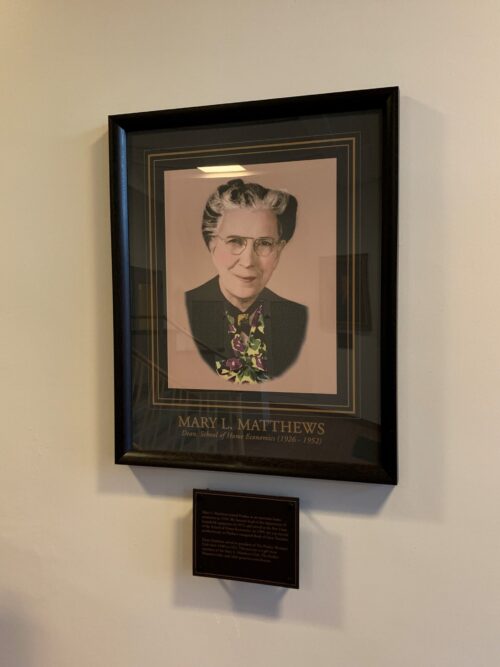Matthews Hall celebrates 100 years of history and memories
Written By: Rebecca Hoffa, rhoffa@purdue.edu

Today, Matthews Hall houses a variety of classrooms, lab spaces and administrative offices in the College of Health and Human Sciences. Rebecca Hoffa
Nearing a 100-year milestone in late 2022, Matthews Hall has a rich history in the Purdue University College of Health and Human Sciences (HHS) — from its namesake, Mary L. Matthews, to the alumni, faculty, staff and students who have shaped it throughout the years.
While the building has experienced countless changes since construction wrapped up a century ago in 1922, it remains an important part of many HHS alumni’s memories of Purdue.
“As an alumna, I always think of things that I did in Matthews Hall,” said Mary Alice Nebold, a 1959 vocational home economics education alumna and professor emerita of consumer sciences at Purdue. “Lots of the things I’ve forgotten, but there are some things that are still vivid in my mind. I think people enjoy coming back to campus and saying, ‘I had class in that building,’ and they’ll remember something about it.”
Expanding home economics

After construction finished in 1922, the Home Economics Building offered modern facilities and equipment that transformed home economics education.Purdue University Archives and Special Collections
Matthews Hall started out as the Home Economics Building and was constructed under the leadership of Mary L. Matthews, who was head of the Department of Household Economics at the time. The building aimed to offer more modern facilities and equipment that would transform home economics education and improve upon the conditions of Ladies Hall, which the home economics program had outgrown.
Construction on the building concluded in late 1922, when the Home Economics Building held its soft opening, showcasing its auditorium — which today is the oldest auditorium on campus — and cafeteria, where students could gain real-world experience in nutrition and institutional management. At the soft opening, which was attended by the Board of Trustees, home economics students served a meal, and former Engineering Dean A.A. Potter gave a keynote address.
The Home Economics Building’s public opening took place a few months later in April 1923, of which the Purdue Exponent remarked that the building was “the best of its kind in the country.” With its apparel labs, cafeteria and new technology, the building provided learning spaces for future teachers, extension specialists, dietitians, costume designers, interior decorators and more.
Shortly after the Home Economics Building opened its doors, in came the newly formed School of Home Economics, of which Mary L. Matthews was made the first dean.
Making memories

A student in the School of Home Economics uses one of the machines in the Textiles Laboratory, which was housed in Matthews Hall.Purdue University Archives and Special Collections
The Home Economics Building was renamed to Home Economics Building Two (HTWO) in 1957, when what is now Stone Hall was built as the Home Economics Administration Building. However, it continued to offer high-quality, hands-on learning experiences for students across a variety of home economics disciplines, including applied design, clothing and textiles, foods and nutrition, institutional management, and home administration.
Purdue vocational home economics education alumna Joyce Miles recalls having mainly clothing and textiles classes in HTWO during her time as an undergraduate student from 1961 to 1965. Home economics was an extremely science-focused major, and Miles noted that with only a few additional courses, students majoring in home economics education could also teach science.
“I remember my textile chemistry class, where we studied the individual fibers — cotton, wool, silk and linen — and the synthetic ones,” Miles recalled. “I loved it. We got to use a microscope to look at the individual fibers. We did experiments with them, and we learned the different properties of cotton, wool, linen and silk.”
For MaryGayle Hartzell, a 1969 home economics alumna and current president of Purdue Women’s Club, HTWO had an important role in her bachelor’s, master’s and doctoral education. With her focus on clothing and textiles for her bachelor’s and master’s degrees, she spent a lot of time in the building’s apparel labs, and when she returned for her PhD in instructional design, it was also housed in Matthews Hall.
“I guess I’d have to say Matthews kind of became like home,” Hartzell said.
Nebold not only was an undergraduate and graduate student in Matthews Hall, but she also taught clothing and textiles in the building as a faculty member in what was then the Department of Clothing and Textiles and even had an office on the third floor. For several years prior to the pandemic, Nebold returned each semester to the Office of Student Services, located on the first floor of Matthews Hall, to assist with the academic progress audits of HHS undergraduate student athletes.
“I think the memories that stand out are the people I interacted with in that building: my colleagues and the students in my classes,” Nebold said.
The legacy of Mary L. Matthews

The portrait of Mary L. Matthews hangs in the entryway of Matthews Hall. Rebecca Hoffa
It wasn’t until 1976 that Home Economics Building Two was renamed to Matthews Hall after Mary L. Matthews, who served as dean of the School of Home Economics from 1926 to 1952. Matthews played an important role in building up the home economics program and opportunities for women during her time at Purdue.
Starting as an extension educator and working her way up to becoming a department head and later the School of Home Economics’ first dean, Matthews elevated the school to becoming the second largest home economics program in the nation. In addition to pioneering what is now Matthews Hall, during her time at Purdue, Matthews also strengthened the School of Home Economics’ focus on child development. She facilitated the creation of the Purdue Nursery School and established a playground east of the Home Economics Building at the spot where Loeb Fountain now resides.
Because of Matthews’ important role in the building’s history, in 2012, the Mary L. Matthews Club, which was started in 1952 to honor Matthews upon her retirement from Purdue, decided that it was important for people who had classes and worked in Matthews Hall to know the legacy of the building.
“Any building that’s named after somebody should at least be able to tell what that person looked like, and that’s what the Mary L. Matthews Club had decided,” said Hartzell, who is a member of the Mary L. Matthews Club. “They had to figure out how to get a portrait from a photograph. They got that done. Then, the Purdue Women’s Club actually helped finance it because they thought it was important that Mary’s portrait be there.”
While the building’s portrait plays an important role in keeping Matthews’ legacy alive, Miles noted that it is important for the people on campus to learn more about the prominent female figures who have shaped the University.
“Another 50 years from now, those of us who grew up with the early home economics program at Purdue are going to be gone, and so the people coming through there really need to know about these women, and certainly Mary L. Matthews is one of them,” Miles said.
Matthews Hall today
Today, Matthews Hall is still home to a variety of classrooms, lab spaces and administrative offices in the College of Health and Human Sciences and holds a place in the memories of countless students, faculty and staff across a variety of majors and departments. Additionally, because the building houses the college’s Office of Student Services, HHS students from all 32 majors get the opportunity to witness the building’s history as they meet with their academic advisors.
Matthews Hall’s 100th anniversary brings hope from alumni like Hartzell that it will continue to be preserved for many more years to come.
“It honors a part of our history that deserves to be honored, and I suppose it will always feel like home,” Hartzell said.